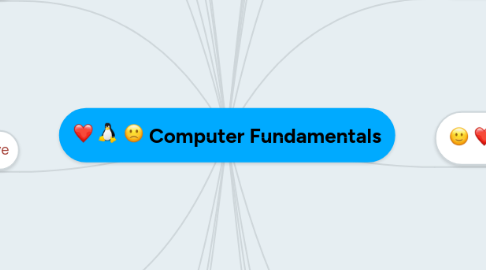
1. Android (For Mobile Devices
2. units of measure
3. A computer is made up of
4. Manages Output (Display)
5. Manages input and Output (Save)
6. keep computers away from magnets
7. dangers of the internet
7.1. some of the danger of the internet are
7.1.1. cyber bullying
7.1.2. phaming
7.1.3. phising
7.1.4. viruses and worms
7.2. when using the internet
7.2.1. report any cases of cyber bullying to the teacher and parants
7.2.2. do not show passwords or per
8. output device
8.1. recieve data from the computer
8.2. monitor
8.3. speakers
8.4. printer
9. About Computers!
9.1. Keyboard
9.2. System Unit
10. Computer ports
10.1. DVI
10.1.1. Digital Video Input
10.2. HDMI
10.2.1. High Definition Multimedia Interface
10.3. USB
10.3.1. Universal Serial Bus
10.4. VGA
10.4.1. Video Graphics Array
10.5. LAN
10.5.1. Local Area Network
11. Lab Safety and Security
11.1. Safety
11.1.1. Tie up untidy wires
11.1.2. Watch out for: • Fire hazards – remove them. • Exposed wires – tape them to the floor or enclose them in casing.
11.2. security
11.2.1. Use a cable lock to prevent your notebook or laptop from being stolen.
11.2.2. Use passwords to protect folders and files in your computer.
12. Files and Folders
13. Storage Media
13.1. memory card
13.2. CD-ROM
13.3. hard disks
13.4. thumb drives
14. Input Process Output
14.1. Incorrect but readable input
14.1.1. recieve data from the computer
14.2. Incorrect but readable output
14.3. Correct and readable input
14.4. Correct and readable output
15. Data Backup and Archive
15.1. Backups are stored in portable hard disks or CD ROMS
15.2. Backups are for short period of time
15.3. Backups are done regularly to saved project in case of data loss
15.4. Archive
16. Care for Equipment and Data
16.1. tie up cables neatly if not in used
16.2. safetly and gently remove all attached hardware
16.3. do not pull paper forcefully out of the printer
16.4. save your work regulary
17. Operating System
17.1. input process output
17.2. Manages Input
17.3. Examples of Operating System
17.3.1. Windows
17.3.2. Linux
17.4. Manages Output
18. Storage Capacity
18.1. Secondary
18.1.1. refers to external storage media
18.2. primary
18.2.1. refers to RAM

